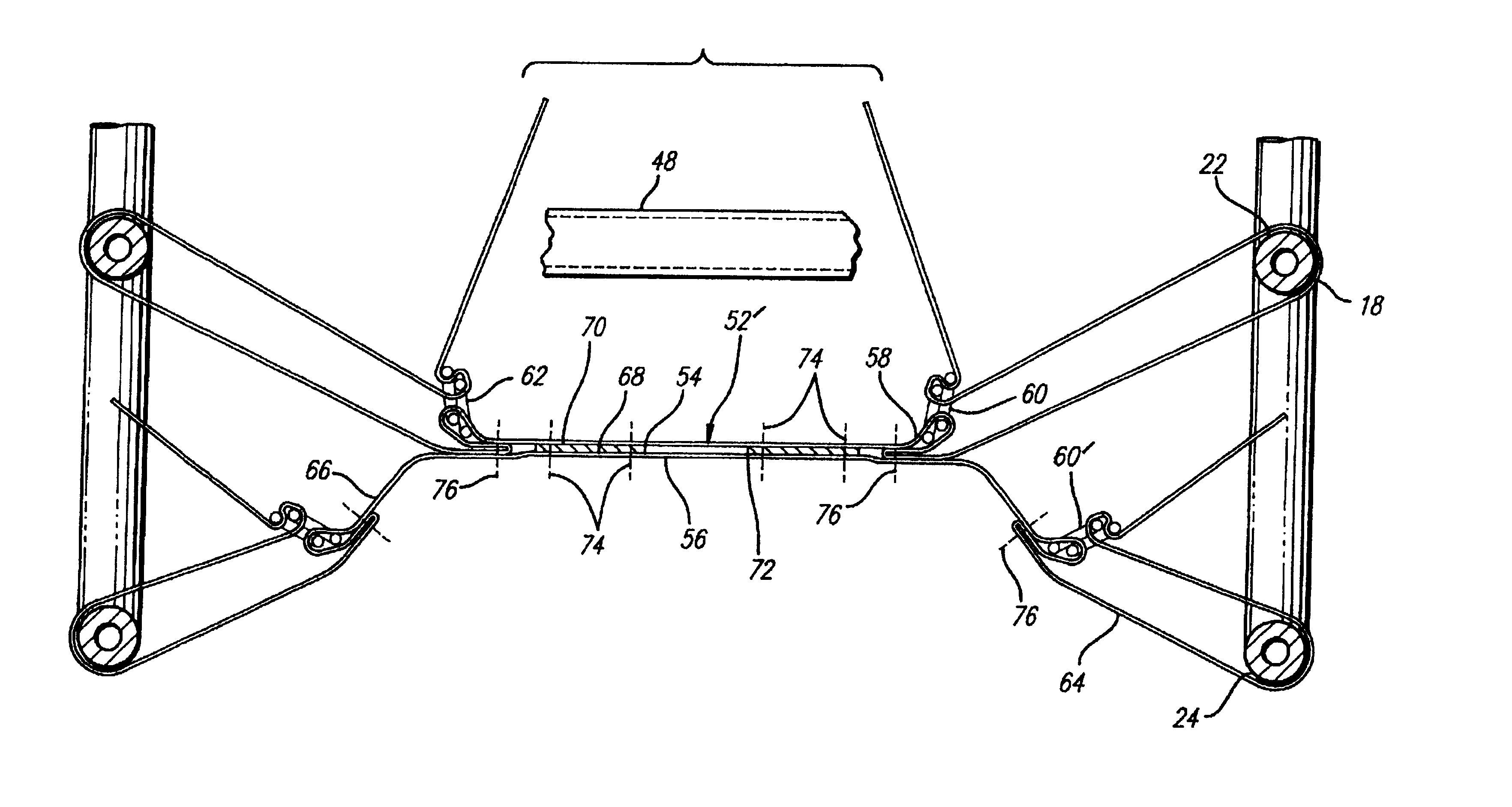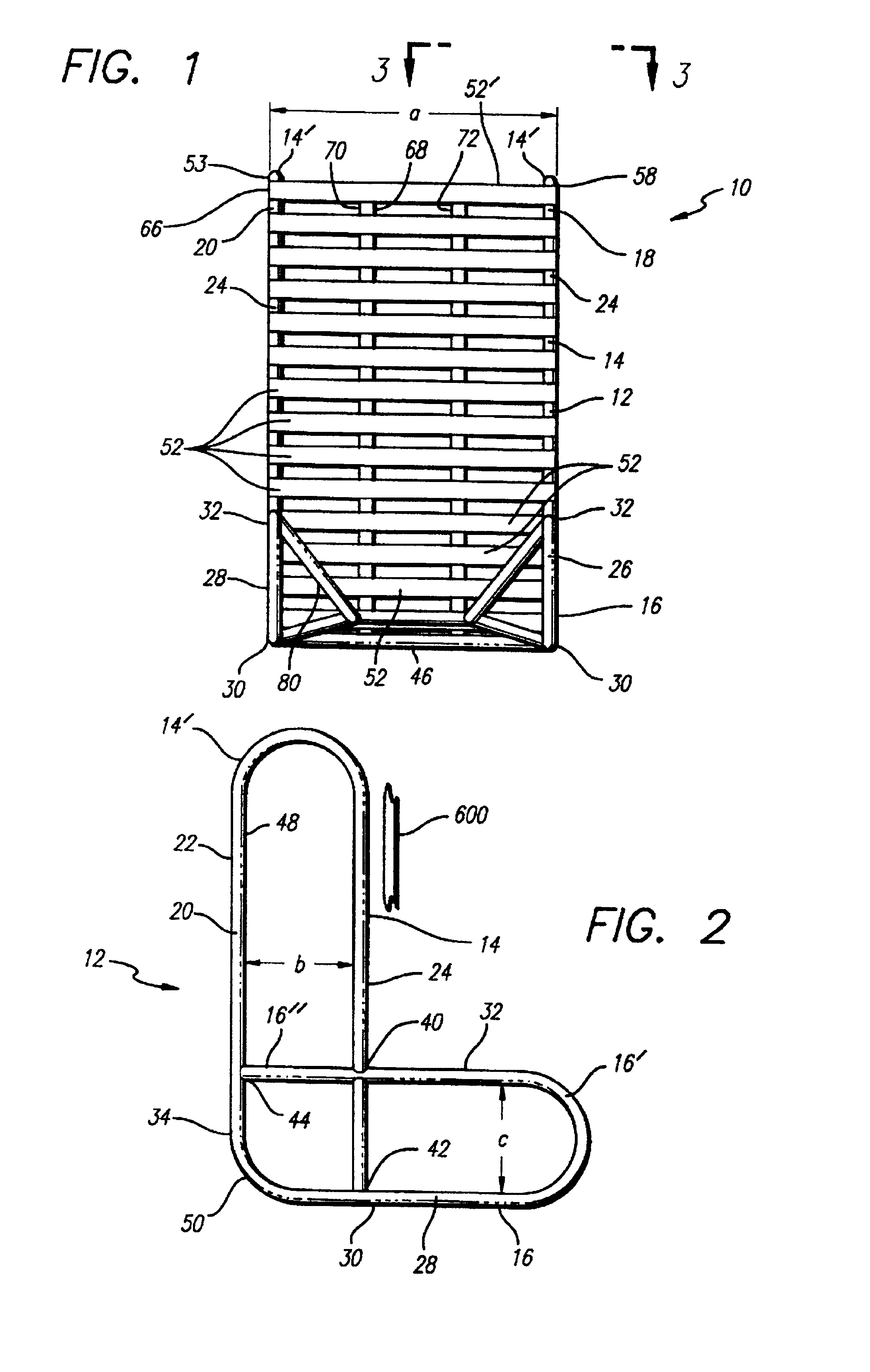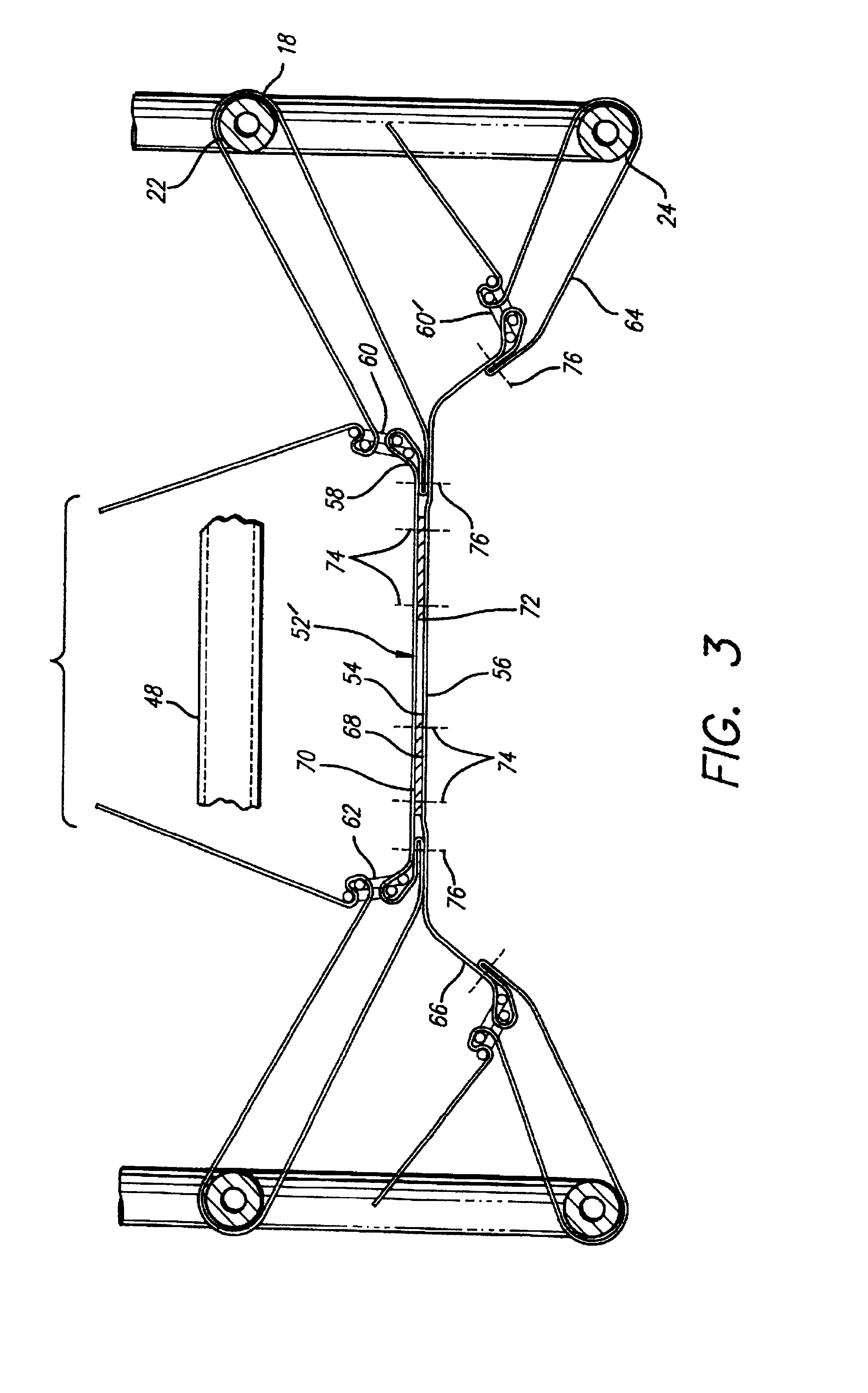Seating arrangement
a seating arrangement and adjustable technology, applied in the field of seating art, can solve the problems of inability to provide the desired seating, inability to adjust the tension, and comparatively high arrangement cos
- Summary
- Abstract
- Description
- Claims
- Application Information
AI Technical Summary
Benefits of technology
Problems solved by technology
Method used
Image
Examples
embodiment 10
[0051]Back joining means generally designated 68 are provided for joining together the adjacent first and second flexible webbing portions of each of the flexible webbing members 52. In the embodiment 10 illustrated in FIGS. 1, 2 and 3 there are a pair of back joining members 70 and 72. The back joining members 70 and 72 are coupled to the first and second flexible support portions 54 and 56.
[0052]In preferred embodiments of the present invention the flexible webbing members 52 and back joining members 70 and 72 are fabric and preferably a nylon webbing. For fabric and / or the nylon webbing structure, the first webbing portion 54, second webbing portion 56 and each of the back joining means 70 and 72 may be coupled together by sewing as indicated at 74. Similarly, the first and second webbing portions 54 and 56 may be coupled together in other locations such as indicated at 76 by sewing or the like. For the first flexible webbing members 52 and the back joining means 68 fabricated fr...
embodiment 100
[0061]In the embodiment 100 there is provided a fifth rigid support element 136 comprising a fifth rigid brace 138 and sixth rigid brace 140. The fifth rigid brace 138 and sixth rigid brace 140 are preferably parallel to each other and coplanar in a plane perpendicular to the planes defined by the first rigid support element 110 and the second rigid support element 112. The fifth rigid support element 130 is spaced from the first rigid support element 110 and second rigid support element 112 in a second direction indicated by the arrow 140 opposite the first direction 134 and is coupled to the transverse members 126 and 128.
[0062]A plurality of first flexible strap means 142 are provided in the back portion 106 of embodiment 100 and in a spaced array from regions adjacent the upper part 131 to regions adjacent the lower part 132 and extend between the first rigid support element 110 and second rigid support element 112.
[0063]The structure for providing the plurality of first flexibl...
embodiment 248
[0073]FIG. 10 illustrates an embodiment 248 having a frame generally designated 250 which may be utilized in the practice of the various embodiments of the present invention. The frame 250 has two rigid spaced apart support elements 252 and 254 which may be considered rigid side members of frame 250 and each of which has a back portion 256 and a seat portion 258. The rigid support element or side members 252 and 254 may be fabricated of wood, metal, plastic or other materials suitable for the purpose and have a thickness, indicated by the letter “t” sufficient to provide the desired strength and rigidity for the anticipated uses. The side members 252 and 254 may be substantially identical to each other and are provided with walls 260 defining spaced apart rows of a plurality of apertures 262 and 264 in the back portion 256 and the seat portion 258.
[0074]A plurality of flexible webbing members 266 which may be substantially similar to the flexible webbing members 52 described above a...
PUM
 Login to View More
Login to View More Abstract
Description
Claims
Application Information
 Login to View More
Login to View More - R&D
- Intellectual Property
- Life Sciences
- Materials
- Tech Scout
- Unparalleled Data Quality
- Higher Quality Content
- 60% Fewer Hallucinations
Browse by: Latest US Patents, China's latest patents, Technical Efficacy Thesaurus, Application Domain, Technology Topic, Popular Technical Reports.
© 2025 PatSnap. All rights reserved.Legal|Privacy policy|Modern Slavery Act Transparency Statement|Sitemap|About US| Contact US: help@patsnap.com



